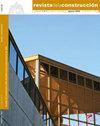A decision tree-based damage estimation approach for preliminary seismic assessment of reinforced concrete buildings
IF 1.4
4区 工程技术
引用次数: 0
Abstract
This study aims to introduce an earthquake-induced damage classification approach for seismic vulnerability assessment of reinforced concrete buildings. Through the use of the damage data collected from post-earthquake inspections after the 2003 Bingöl Earthquake in Turkey, two models were constructed by the decision tree classification technique considering nine building-specific features as the estimation variables in the analysis. The first model was developed for the prediction of the observed damage states of the buildings, whereas the second one concerning the life safety level assessment, was proposed for distinguishing the extremely vulnerable buildings for seismic prioritization. In the validation process, the leave-one-out cross validation technique was adopted to deal with the small sample size of the building inventory. Among the estimation variables, the priority index and the existence of short columns were found to have the highest importance in classification. Results have revealed that the proposed model for life safety level assessment was capable of discriminating the cluster of severely damaged and collapsed buildings from the entire database with an accuracy of 70.59%. Hence, the damage classification approach adopted in this study has the potential for improving effective tools for seismic risk assessment of the existing buildings.基于决策树的钢筋混凝土建筑物地震预估损伤估计方法
本研究旨在介绍一种用于钢筋混凝土建筑物地震易损性评估的震害分类方法。利用2003年Bingöl土耳其地震后的震害检测数据,采用决策树分类技术,以9个建筑特征作为分析的估计变量,构建了两个模型。第一个模型用于预测建筑物的观测损伤状态,第二个模型用于评估生命安全水平,用于区分极易危建筑物进行地震优先排序。在验证过程中,针对建筑库存样本量小的问题,采用留一交叉验证技术。在这些估计变量中,优先级指数和短列的存在性对分类的重要性最高。结果表明,该生命安全等级评价模型能够从整个数据库中识别出严重受损和倒塌的建筑物群,准确率为70.59%。因此,本研究采用的损伤分类方法有可能改进现有建筑地震风险评估的有效工具。
本文章由计算机程序翻译,如有差异,请以英文原文为准。
求助全文
约1分钟内获得全文
求助全文
来源期刊

Revista de la Construccion
工程技术-工程:土木
CiteScore
2.30
自引率
21.40%
发文量
0
期刊介绍:
The Journal of Construction is aimed at professionals, constructors, academics, researchers, companies, architects, engineers, and anyone who wishes to expand and update their knowledge about construction. We therefore invite all researchers, academics, and professionals to send their contributions for assessment and possible publication in this journal. The publications are free of publication charges.
OBJECTIVES
The objectives of the Journal of Construction are:
1. To disseminate new knowledge in all areas related to construction (Building, Civil Works, Materials, Business, Education, etc.).
2. To provide professionals in the area with material for discussion to refresh and update their knowledge.
3. To disseminate new applied technologies in construction nationally and internationally.
4. To provide national and foreign academics with an internationally endorsed medium in which to share their knowledge and debate the topics raised.
 求助内容:
求助内容: 应助结果提醒方式:
应助结果提醒方式:


